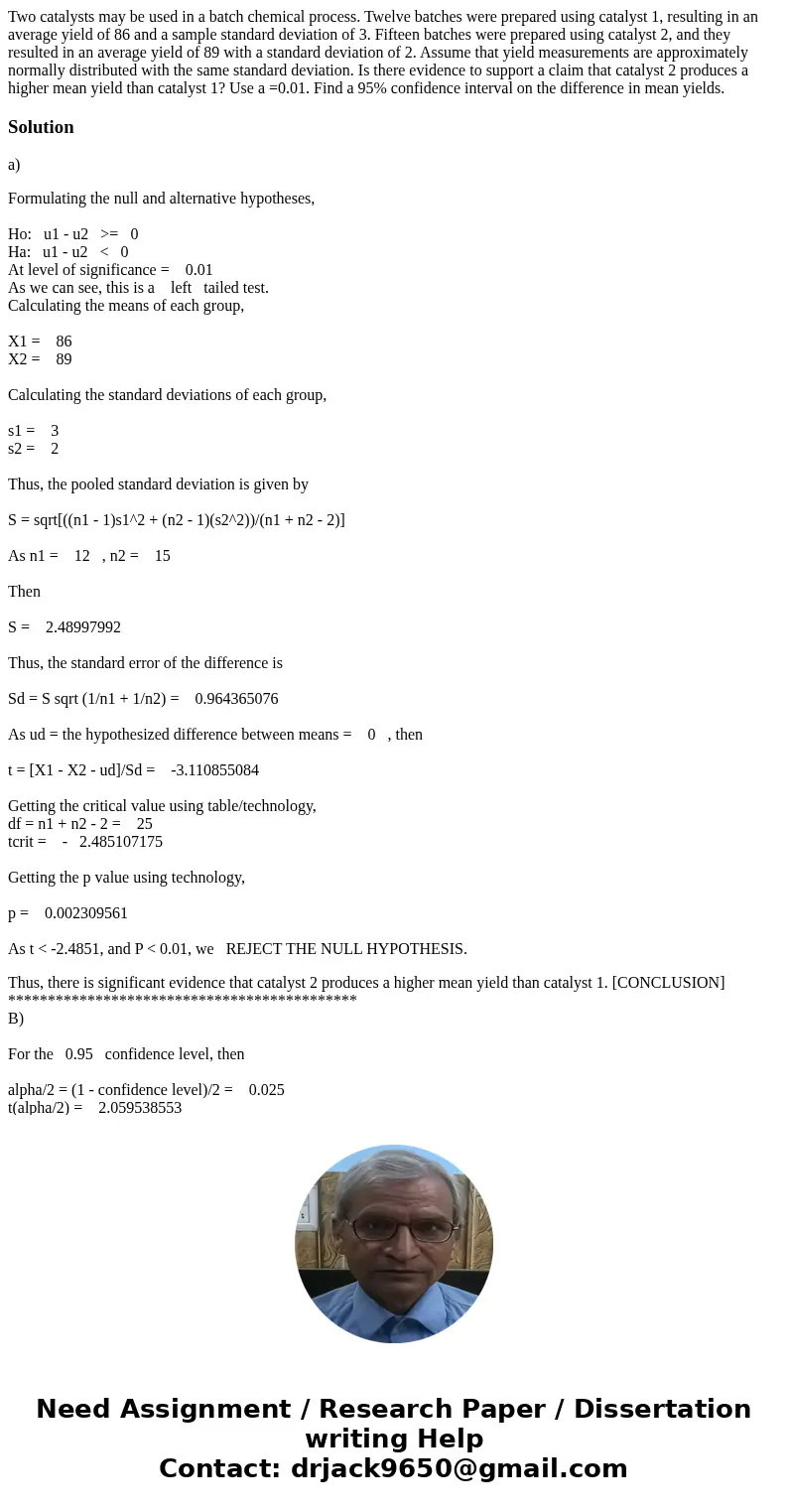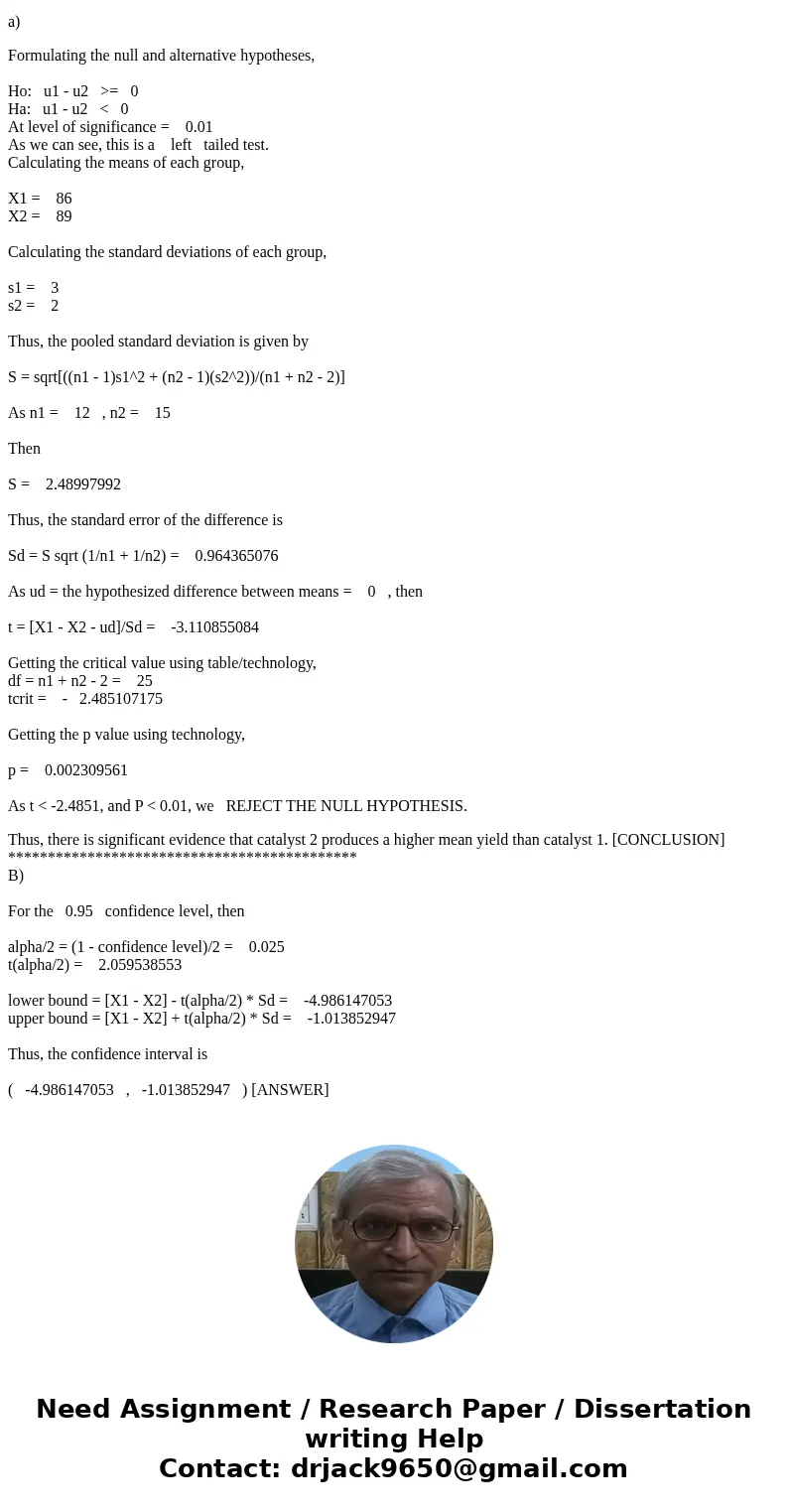Two catalysts may be used in a batch chemical process Twelve
Solution
a)
Formulating the null and alternative hypotheses,
Ho: u1 - u2 >= 0
Ha: u1 - u2 < 0
At level of significance = 0.01
As we can see, this is a left tailed test.
Calculating the means of each group,
X1 = 86
X2 = 89
Calculating the standard deviations of each group,
s1 = 3
s2 = 2
Thus, the pooled standard deviation is given by
S = sqrt[((n1 - 1)s1^2 + (n2 - 1)(s2^2))/(n1 + n2 - 2)]
As n1 = 12 , n2 = 15
Then
S = 2.48997992
Thus, the standard error of the difference is
Sd = S sqrt (1/n1 + 1/n2) = 0.964365076
As ud = the hypothesized difference between means = 0 , then
t = [X1 - X2 - ud]/Sd = -3.110855084
Getting the critical value using table/technology,
df = n1 + n2 - 2 = 25
tcrit = - 2.485107175
Getting the p value using technology,
p = 0.002309561
As t < -2.4851, and P < 0.01, we REJECT THE NULL HYPOTHESIS.
Thus, there is significant evidence that catalyst 2 produces a higher mean yield than catalyst 1. [CONCLUSION]
********************************************
B)
For the 0.95 confidence level, then
alpha/2 = (1 - confidence level)/2 = 0.025
t(alpha/2) = 2.059538553
lower bound = [X1 - X2] - t(alpha/2) * Sd = -4.986147053
upper bound = [X1 - X2] + t(alpha/2) * Sd = -1.013852947
Thus, the confidence interval is
( -4.986147053 , -1.013852947 ) [ANSWER]


 Homework Sourse
Homework Sourse